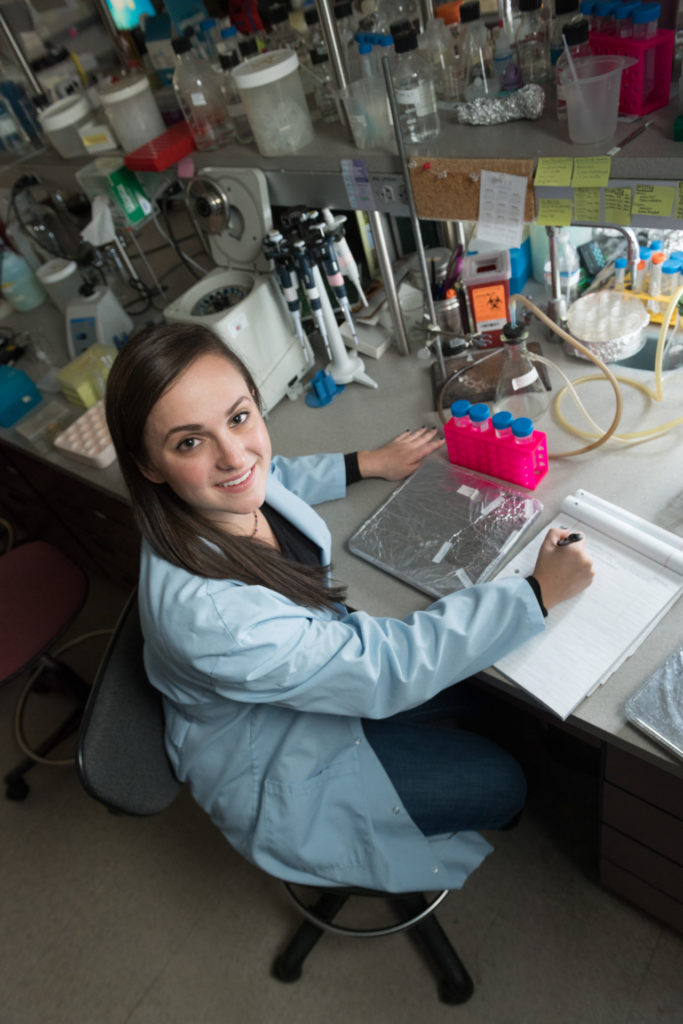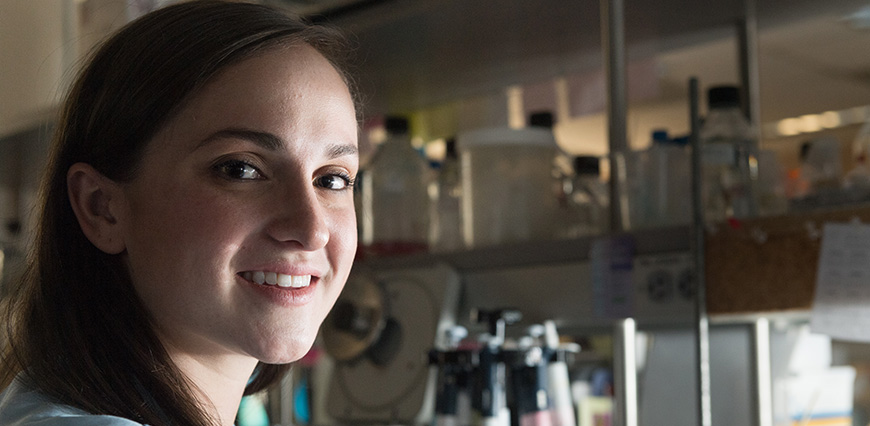Reflecting the interests of her peers in neuroscience, Coloroso hopes to attend pharmacy school or pursue research through a doctoral program.
“The neuroscience program has been hugely successful so far,” said Phillip Quirk, an assistant professor in the Department of Biomedical Sciences[4] and director of the undergraduate neuroscience degree program. “Part of what makes it so interesting, and the major so attractive to students, is the fact that there’s a lot that we still don’t know about how the brain works.”
Brainiac
Soon after delving into her psychology courses, Coloroso became fascinated by neuroscience and wanted a deeper understanding of the nervous system. CSU’s neuroscience major is a multidisciplinary program focusing on how the nervous system develops, how it is structured, and how it controls our senses, perceptions, thoughts and behaviors in both normal and disease states.

[5]
“Psychology is very interesting, but I discovered that I wanted to learn more about the biochemical basis of the behaviors we were learning about,” said Coloroso, of Louisville, Colo. “I took neurobiology and neuroanatomy, and through those classes discovered that neuroscience was what I really wanted to study.”
Inspired, she began researching schools with neuroscience programs, serendipitously heard about CSU’s new major and immediately pursued it. She stayed at CSU and, with uncommon motivation, picked up a third major in neuroscience.
“This program was over 10 years in the making,” said James Bamburg, a professor in the Department of Biochemistry and Molecular Biology and former director of MCIN.
There weren’t many neuroscience undergraduate degree programs available – and many established programs focused on psychology. Bamburg wanted to build a neuroscience program with a strong foundation in basic science that would allow students to select one of two concentrations.
That’s just what occurred: Students more interested in neuron function may choose the cell and molecular concentration, while students interested in the biological basis of behavior may choose the behavioral and cognitive concentration. All neuroscience students take high-level science courses that fulfill the requirements for medical school.
“The medical professions, as well as graduate school, are popular goals for many of our current neuroscience students,” Quirk said. “What sets our program apart from a lot of other neuroscience programs around the country is that it’s built from the ground up as a solid science program. There’s so much students can do with this degree and so many different directions they can take.”
The degree requires a senior thesis, which can be a laboratory- or a literature-based research experience that students present in a public forum before graduation.
Coloroso worked in Bamburg’s lab, where she researched the neurodegenerative process and the activity of specific proteins involved in Alzheimer’s disease.
“I’m a very curious person, and I love the scientific process,” Coloroso said. “Working in Dr. Bamburg’s lab pushed me to go beyond the typical undergraduate experience and taught me that research is definitely something I want to continue to do in the future.”
Coloroso’s research provided Bamburg’s lab with interesting results that will help further his team’s investigations into Alzheimer’s disease. “She’s a very unique and tenacious student,” Bamburg said. “I’m certain she will be successful in anything she sets her mind to.”
“I feel like I have a lot of options now,” Coloroso said. “I was in limbo for so long trying to figure out exactly what I wanted to do, but once I found the neuroscience program I felt like, ‘Yes, I’ve got it! This is what I’m really interested in and what I want to pursue.’”

 [5]
[5]
 [6]State Your Purpose
[6]State Your Purpose